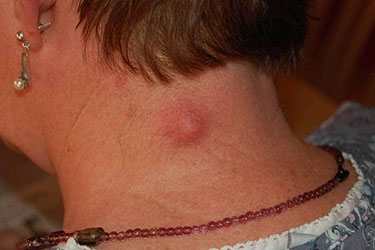Cysts are closed capsule or sac-like structures, typically filled with a liquid, semisolid, or gaseous material, much like a blister.
Cysts vary in size from microscopic to very large. Very large cysts can displace internal organs. The majority are benign, but some cysts can be cancerous or precancerous.
A cyst is not a normal part of the tissue where it is located. It has a distinct membrane and is separated from nearby tissue. The outer (capsular) portion of a cyst is called the cyst wall.
If the sac is filled with pus, the cyst is infected and will turn into what is called an abscess.


The treatment options for a cyst will depend on a range of factors, including the type of cyst, where it is, its size, and the degree of discomfort it is causing.
For very large cysts that are causing symptoms, a doctor may recommend surgical removal.
Sometimes, they might drain or aspirate the cyst by inserting a needle or catheter into the cavity. If the cyst is not easily accessible, they may use radiologic imaging to accurately guide the needle or catheter.
Other cysts require surgical removal (some cysts like ovarian cysts can be removed by laparoscopic surgery), especially if there's any suspicion of malignancy.
Many cysts develop as a result of a chronic or underlying medical condition, as may be the case with fibrocystic breast disease or polycystic ovary syndrome. In such cases, the focus of the treatment will be on the medical condition itself, not the cyst.
